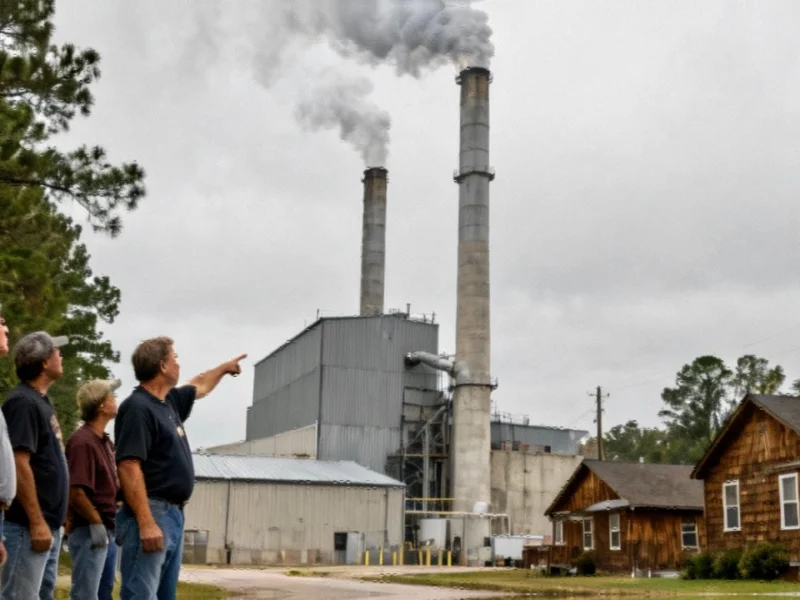Congressional Pressure Mounts Over Delayed Chemical Risk Report
A senior House Democrat is demanding transparency from the Environmental Protection Agency regarding the delayed publication of a health risk assessment for a toxic “forever chemical” found in drinking water systems serving millions of Americans. According to reports, Rep. Chellie Pingree (D-Maine) sent a formal letter to EPA Administrator Lee Zeldin this week requesting “clear answers” about why the PFNA assessment remains unpublished despite being reportedly ready for release since April.
Scientific Interference Concerns Raised
In her correspondence, Pingree characterized the delay as part of “a growing pattern of interference with the Agency’s scientific work” and specifically referenced the EPA’s Integrated Risk Information System (IRIS) program, which prepared the assessment. Sources indicate that IRIS, established during Ronald Reagan’s presidency, has faced significant opposition from industry groups and political figures. Pingree’s letter reportedly questioned whether scientists had been removed or reassigned from the program and sought details about who directed the report’s delay.
“The Trump Administration, Republicans in Congress, and industry have been hostile to the IRIS program,” Pingree wrote, according to documents reviewed by news outlets. Her official communication to the EPA expressed particular concern about the timing of the delay, noting it coincided with the agency’s decision to rescind drinking water limits for PFNA and several other PFAS chemicals.
Widespread Contamination and Health Risks
The unpublished assessment reportedly details significant health concerns associated with PFNA (perfluorononanoic acid), which contaminates drinking water systems serving approximately 26 million people. According to the report, the chemical interferes with human development by causing lower birth weights and, based on animal evidence, likely causes damage to the liver and male reproductive systems. Analysts suggest these findings could include reductions in testosterone levels, sperm production, and reproductive organ size.
PFNA was historically used in firefighting foam and as a processing aid for manufacturing specialized plastics. Although subject to a voluntary phaseout nearly two decades ago, the chemical persists extensively in the environment, creating ongoing exposure risks. Documentation from previous investigations illustrates how similar compounds have contaminated communities nationwide.
Program Erosion and Political Context
ProPublica’s reporting indicates the IRIS program has been dramatically reduced under the current administration. Of 55 EPA scientists identified as having worked on recent IRIS assessments, sources familiar with the program claim only eight remain in the office. This reduction coincides with broader legislative efforts targeting EPA scientific assessments and comes as conservative policy proposals call for the program’s elimination.
Pingree noted the apparent contradiction between Zeldin’s public statements about protecting the public from PFAS compounds and the delayed release of critical health data. “Our state is really hoping for help from the federal government,” she told reporters. “And when you see the federal government turn their back on you and decide to withhold the data… that’s really discouraging.”
Critical Implications for Public Health Protection
The withheld report reportedly calculates the amount of PFNA that people can be exposed to without harm—a crucial measurement used to establish cleanup levels for contaminated Superfund sites and drinking water standards. This calculation would prove instrumental for communities nationwide as they seek to hold polluters accountable for remediation costs. According to environmental watchdog data, PFNA contamination affects water systems across multiple states.
The delayed publication raises questions about how industry developments might influence regulatory science. Pingree’s letter suggests the timing “seems to be more than coincidence given that there has been strong industry pushback on regulating PFAS.”
Agency Response and Ongoing Scrutiny
An EPA spokesperson previously stated that the PFNA report would be published when finalized but declined to specify what steps remained or provide a timeline. The agency’s press office has not responded to inquiries about Pingree’s letter. The complete congressional correspondence outlines specific questions about the decision-making process behind the delay.
As this situation develops, observers note the broader implications for environmental regulation and scientific integrity within federal agencies. The outcome may influence how emerging contaminants are assessed and regulated amid evolving policy landscapes and increasing public concern about forever chemicals in the environment.
This article aggregates information from publicly available sources. All trademarks and copyrights belong to their respective owners.
Note: Featured image is for illustrative purposes only and does not represent any specific product, service, or entity mentioned in this article.



